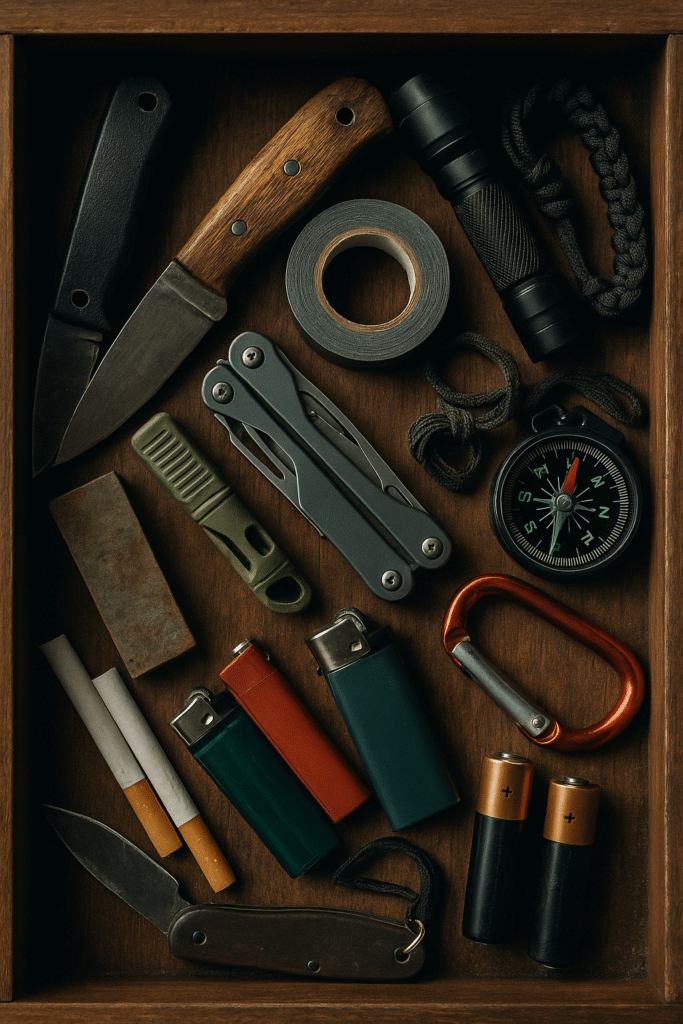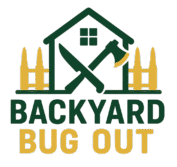
10 Junk Drawer Survival Tools Hiding in Your Home
Excerpt: The best survival tools aren’t always found in a tactical catalog—they’re often hiding right in your kitchen junk drawer. Here’s how to turn everyday items into lifesavers when emergencies hit.
The Overlooked Goldmine Sitting in Your Home
When most people think of prepping, they picture bug-out bags, expensive gear, or advanced gadgets. But the truth is, survival often depends on how resourceful you are—not how much gear you own. Your junk drawer is a goldmine of overlooked tools that can help you repair, signal, cut, bind, and even create fire when things go wrong.
Prepping doesn’t have to be about spending money—it’s about training your eyes to see utility in what you already have. With a little creativity, ordinary household objects can perform extraordinary tasks.
1. Duct Tape: The Universal Fixer
- Patch leaks in tents, hoses, or tarps
- Build or repair gear straps
- Seal containers or wounds (temporary bandage)
- Make improvised rope or splints
💡 Pro Tip: Wrap a few feet of duct tape around a lighter or water bottle for a portable supply.
2. Pocketknife or Multi-Tool
- Cut cordage, fabric, or tinder
- Make tools from wood
- Open cans or containers
- Perform basic first aid
🪓 Upgrade idea: Pair your drawer knife with a small sharpener or keep a multitool handy for pliers, screwdrivers, and scissors.
3. Batteries: Power When It Counts
- Keep a mix of AA, AAA, and 9V batteries
- Rotate them every 6–12 months
- Store in a cool, dry place
🔋 Survival hack: Two AA batteries and some steel wool can start a fire—practice this safely outdoors.
4. Flashlight: Light = Morale
Even a small flashlight is one of the most critical survival tools. During blackouts, light equals comfort and confidence.
- Check batteries quarterly
- Store an extra bulb or LED replacement
- Keep one flashlight in your drawer and another in your bug-out bag
👉 Upgrade later: Add a headlamp for hands-free work in the dark.
5. String, Twine, or Fishing Line
- Set up clotheslines or shelter tie-downs
- Secure splints or bandages
- Create snares or fishing setups
- Repair gear or hang food
🪢 Prepper tip: Wrap string or line around an old gift card for a compact carry size.
6. Lighter or Matches
- Keep one lighter for daily use and another sealed for emergencies
- Store matches in a zip bag to prevent moisture
- Learn alternate fire-starting methods (battery + foil, flint, ferro rod)
🔥 Pro Tip: Add a small candle stub or tea light for extra heat and light during outages.
7. Super Glue or Electrical Tape
- Seal minor gear damage or cracks
- Patch tents or clothing
- Reinforce cordage or tool grips
- Temporary fix for handles or straps
🧴 Note: Keep super glue sealed in plastic and replace yearly to prevent drying.
8. Rubber Bands & Zip Ties
- Secure tools or gear together
- Lash knives or poles for makeshift spears
- Create snares or traps
- Bundle cords and cables
📦 Bonus use: Zip ties can even help secure clothing, doors, or bandages in an emergency.
9. Aluminum Foil
- Reflect light or heat
- Make a pan or cooking surface
- Protect tinder from moisture
- Shape into funnels or containers
🌞 Pro Tip: Foil balls can clean rust and sharpen scissors in a pinch.
10. Safety Pins & Paperclips
- Fix gear, clothing, or zippers
- Remove splinters
- Unlock doors or cuffs (with know-how)
- Serve as fishhooks or sewing needles
🧷 Prep hack: Keep a few in your wallet or EDC kit—they weigh nothing and solve plenty.
The Mindset Behind “Junk Drawer Survival Tools”
Prepping starts with awareness and adaptability. Once you begin to see everyday items as potential survival assets, your home becomes a mini supply depot. It’s not about expensive gear—it’s about thinking creatively under pressure.
Building a Kit from Your Drawer
Gather your best items into a small “micro kit” that lives in your kitchen or car:
- Pocketknife / lighter / duct tape / flashlight
- Rubber bands / paperclips / string
- Super glue / zip ties / foil
Store them in a labeled tin or pouch marked “Mini Survival Kit.”
Rotation & Maintenance
- Check batteries, glue, and tape every 6 months
- Replace rusted or brittle tools
- Keep lighters and matches cool and dry
- Mark inspection dates on the kit
Internal Links
External Resources
- Ready.gov – Build a Kit
- FEMA – Emergency Supplies Checklist (PDF)
- CDC – Emergency Preparedness Basics
FAQ
How do I build a kit from my junk drawer survival tools?
Start with multipurpose items like duct tape, lighters, knives, string, and batteries. Store them together in a labeled bag or tin for quick access.
Are junk drawer survival tools reliable in real emergencies?
Yes, if used creatively. These tools can bridge the gap during power outages or short-term emergencies.
What should I add if I want to upgrade my kit?
Add a compact water filter, first aid kit, and power bank for more capability.
How often should I replace items?
Every 6–12 months—especially lighters, glue, and batteries.
Can kids help build the kit?
Absolutely! It’s a fun, low-stress way to teach resourcefulness and emergency readiness.
